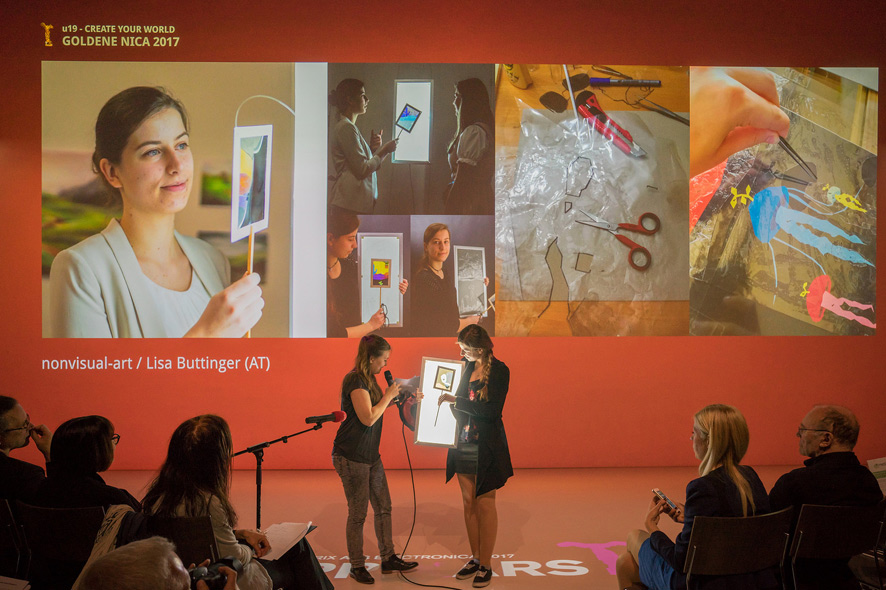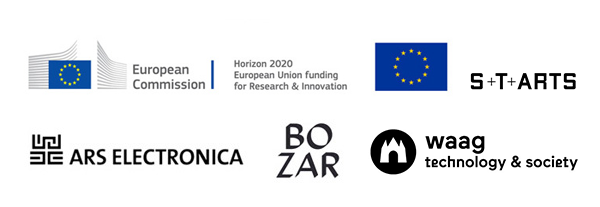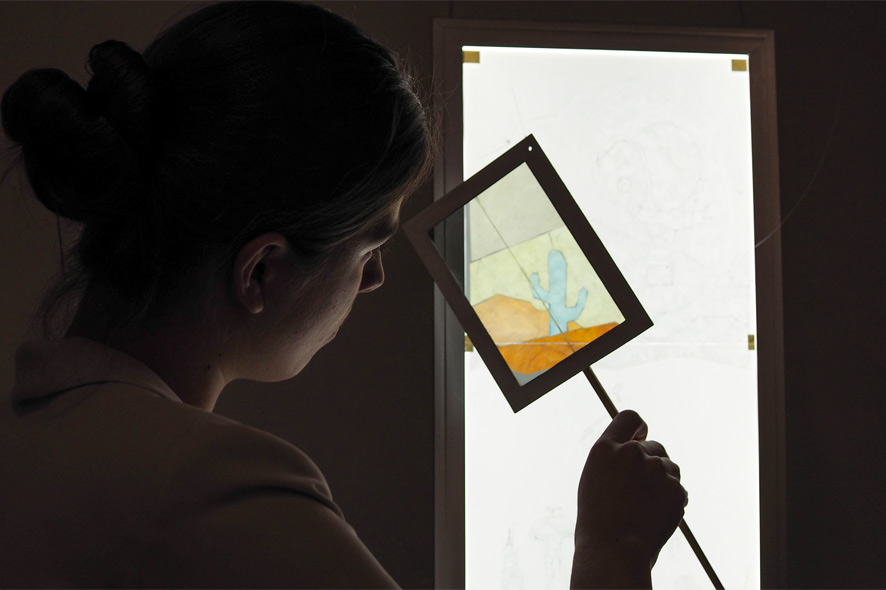“It is strong in its curious investigation while at the same time it is controlled and very open to its “handmade” expression.” The Prix Ars Electronica (u19 – CREATE YOUR WORLD) and STARTS Prize juries were literally amazed when they first beheld the images that Lisa Buttinger’s technique was capable of producing. She has developed an innovative medium based on the phenomenon of light refraction. Cellophane foil, a polarization filter and 3-D glasses are what it takes to conjure up a magical world of fantasy in images that change color depending on the angle from which they’re viewed.
How did you get interested in various forms of light refraction?
Lisa Buttinger: Actually, my first encounter with light refraction was many years ago. When I was eight years old, I was fascinated by shimmering CDs and I started to tinker with them. Then in physics class in high school, I worked with polarization filters and I got valuable support from my teacher. And then I carried on my research in my spare time, which is how I came up with this idea.

Lisa Buttinger introduced her nonvisual-art to the press in May 2017. Credit: Robert Bauernhansl
Did it take a long time to complete this nonvisual art project?
Lisa Buttinger: I worked on it for several months. My first motif was a tree, and I was still experimenting in connection with the computer. At first, all that was visible was the bare branches of the tree, and then, activating the polarization filter, the tree’s colorful leaves appeared. That was my first experiment. A polarization filter was already built into the computer screen, so all I needed was another one. Then I experimented with various colors and color mixtures. Ultimately, I needed to work with many motifs until I arrived at this one. After all, it had to match the colors of the 3-D glasses.
What does the viewer see in your nonvisual artwork and how does it function?
Lisa Buttinger: You see a fantasy world that’s meant to awaken childlike curiosity a bit and motivate you to discover something new. Nonvisual art functions by means of refraction, and that happens in two different ways—light is refracted by the cellophane and by the lenses of the 3-D glasses.

Credit: Martin Hieslmair
Where did you do your project? Do you have a workshop at home?
Lisa Buttinger: No, I don’t have a professional workshop! [laughs] It’s more like I improvised with what I scrounged up—a plate of glass, a lamp, a polarization filter from the second-hand store. But it wasn’t until I discovered how all of it works that I rounded up the materials. Then, my boyfriend gave me a lot of help cutting out and gluing the foil. That was a tremendous amount of work and he really gave me a lot of support.
How could what you’ve come up with be used in the future? Do you have any ideas of your own on how to develop this further?
Lisa Buttinger: If you’re creative, you can discover lots of ways to use this technique. For interior decorating, it’s especially practical—above all because it’s really beautiful. I’ve been giving some thought to whether I’d like to proceed in this direction. For instance, I could build a three-dimensional lamp. When you install the polarization filter right on the lamp, then the colors change only when the person moves about in the room. The material costs for this would be somewhat higher, but it sure would be interesting to try it out.

Lisa Maria Buttinger was born in 1997 in Braunau, Upper Austria. She attended Schalchen Elementary School 2004-08, Braunau Preparatory School 2008-12, and then Linz High School for Artistic Design, from which she graduated in April 2017. While at prep school, an enriched program for gifted youngsters enabled her to also attend Schloss Traunsee Academy. In 2014, in conjunction with a mandatory internship, she got four weeks of experience in the private sector at media.dot.
This project has received funding from the European Union’s Horizon 2020 research and innovation programme under grant agreement No 732019. This publication (communication) reflects the views only of the author, and the European Commission cannot be held responsible for any use which may be made of the information contained therei
